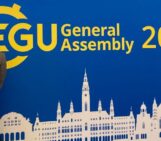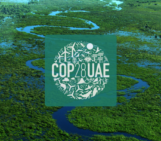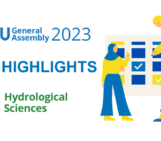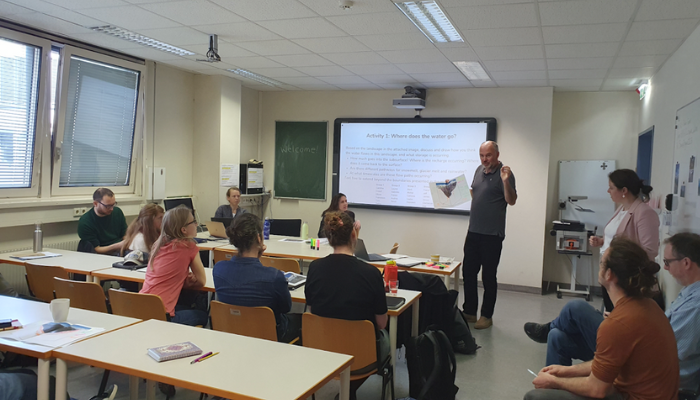
Despite the importance of mountains for downstream water supply, there are large gaps in our scientific understanding of how snow and ice meltwater travels through the landscape, specifically which flowpaths meltwater takes below the surface. Plus, existing knowledge is scattered throughout various sub-disciplines of mountain hydrology: glaciology, snow science, hydrogeology, and surface hydrology.
That is why we decided to bring together a group of experts in a one-day workshop on this topic – to synthesize knowledge and foster opportunities for future collaborations. As a result, 22 scientists from 13 countries met at BOKU University in Vienna on April 23 for a full day of lively discussions.
In this post, we, the organizers, outline our experience and share our tips for other Early Career Scientists (ECS) looking to organize similar workshops.
Workshop organization: ideas, discussions, funding and advertising
The Vienna cryosphere-groundwater workshop didn’t happen overnight. It required careful preparation and collaboration. Marit and Caroline, hydrologists from Zurich and Canmore who work on glacierized catchments, recognized the need for better understanding of the path taken by glacier meltwater to rivers, particularly underground. To address this knowledge gap, we formed a working group with Lauren, an expert in mountain groundwater, and secured funding from the Mountain Research Initiative for a synthesis workshop. We decided to organize the workshop in Vienna the weekend before EGU, so participants could combine the workshop with the largest European Geoscience conference and only travel once. With the workshop set in motion, we enlisted the help of Franzi, a local snow expert, to facilitate logistics in Vienna.
We promoted the workshop on various platforms such as the MRI website, Twitter and mailing lists (abouthydrology and cryolist) and gave about a month’s time for people to apply. We ended up with more people interested to join our workshop than available places, and we therefore had to design a selection process in which we wanted to take into account diversity by creating a group of various expertise, career stage, study area and gender.
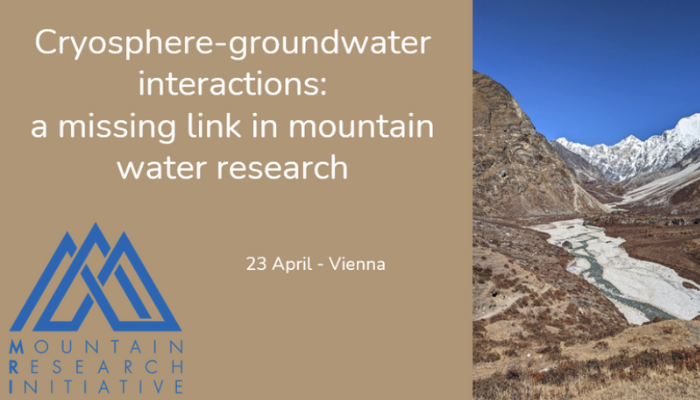
For advertising our workshop and for the materials on the workshop day itself we designed a flyer
With participants confirmed and the date and location finalized, we focused on creating a program and organizing the necessary logistics, including food arrangements for the workshop day. Through online meetings, we discussed the workshop’s goals, outcomes, and various discussion formats.
The big day: running the Workshop
The night before the workshop, we organized an informal dinner at a traditional Viennese restaurant. Catching up with colleagues, and meeting new ones in this relaxed setting allowed us to foster a collegial atmosphere, which benefited the workshop discussions.
On the workshop day, fresh coffee welcomed the participants – many of whom were jetlagged and thus in need of the additional caffeine boost. After a short workshop introduction, the discussion between participants started in earnest! We split the day between three rounds of small group discussions about meltwater flow pathways, recharge processes in mountain environments, groundwater exfiltration to mountain streams, and mountain community interactions. In addition, we had three short talks from participants to share specific expertise with the rest of the group. The last hours of the day were set up as a synthesis, where key points were discussed.
The day also included multiple food and refreshment opportunities, where participants could continue discussion and get to know each other further.
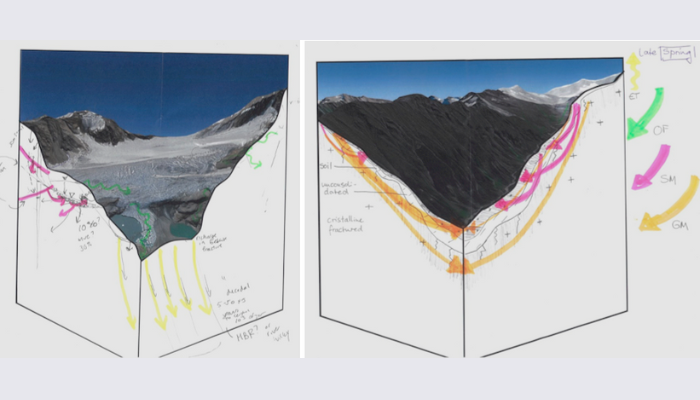
Results of the group exercises “where does the water go?” Groups of participants were given a different, in terms of scale and location, glacierized landscape and were asked to draw the “invisible” sub-surface flowpaths.
From discussions to written output
One of the goals of the workshop was to produce a synthesis paper summarizing the current research landscape and future trajectory needed to fill knowledge gaps between the fields of cryospheric sciences and mountain groundwater hydrology. We are now in the process of writing this document with the workshop participants. We are taking a divide-and-conquer approach with subgroups working on three themes: (1.) the glacier-groundwater connection, (2.) the snow-groundwater connection, and (3.) reconciling these cryosphere-groundwater interactions across scales. Writing in large groups is always challenging, but we are excited to see what our fantastic group can produce!
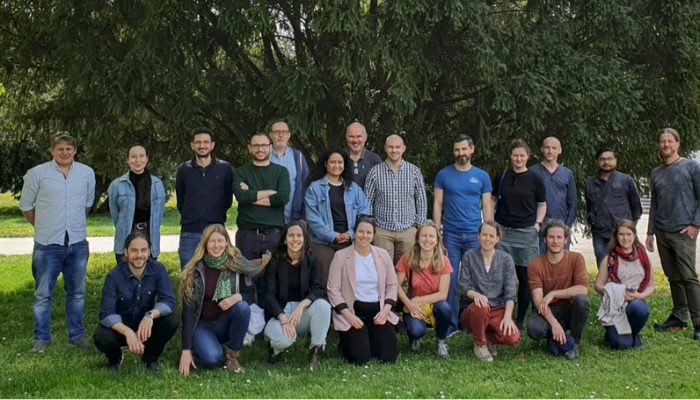
Participants of the one-day workshop in Vienna on Sunday before EGU started
Lesson learned
Organizing this workshop was – and continues to be – a great learning experience. Here are our top tips for other ECRs looking to organize a scientific workshop:
- Discussions take time – the biggest challenge of the workshop day was keeping participants on time. We had to cut short numerous interesting discussions due to time constraints. In a future iteration, we would likely have the workshop run over several days instead of one, or else plan fewer activities
- Start the planning early – visas and travel authorization for participants from some countries can be very time-consuming and lead to last minute cancellations.
- Have a diverse group of participants – we made a concerted effort to recruit participants from varied career stages – from PhD to full professor. This provided a range of knowledge types – from a recently graduated PhD with very fresh ideas about a topic, to experienced professors who have seen the trends and changes in what we know about groundwater hydrology.
- While it’s tempting to fill the day with structured discussion, try to find time to have “water cooler” talks between the participants, where they can get to know each other.
Edited by Christina Orieschnig


